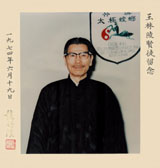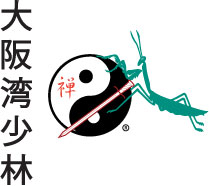Featuring Northern Shaolin Tai Chi Praying Mantis Kung Fu
本場の英語で習う太極拳
__________________
Shaolin Kung Fu
Bei (Northern) Shaolin History
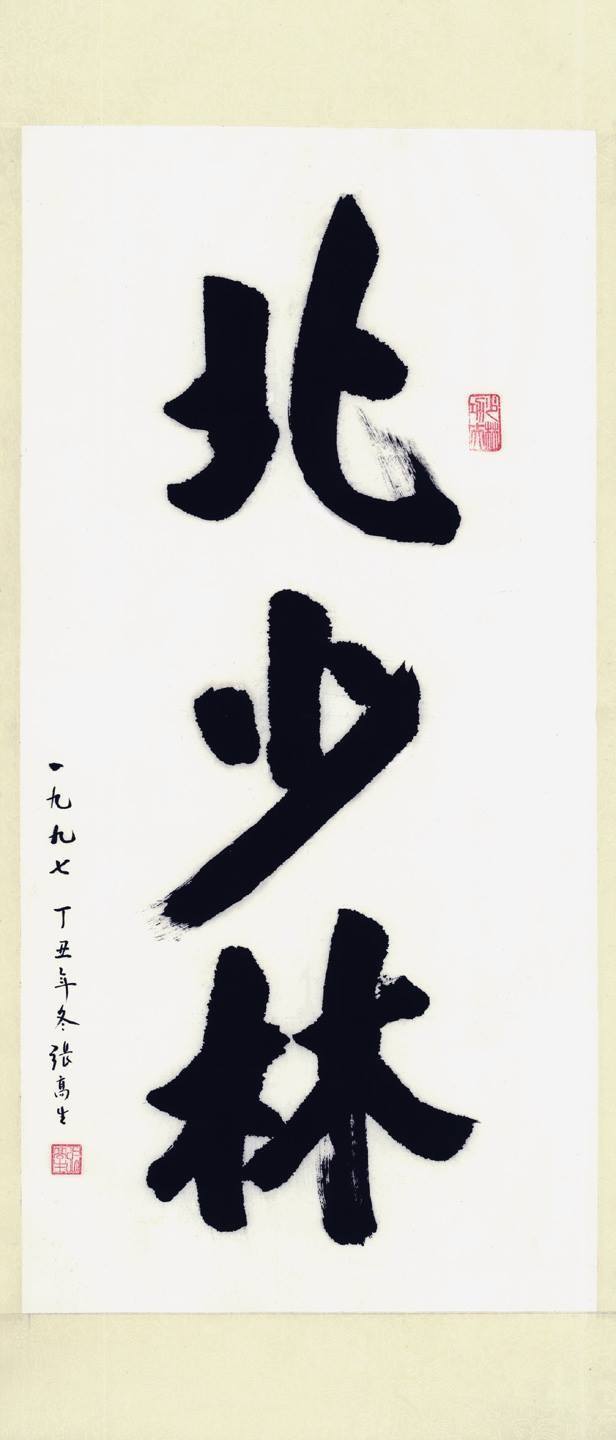
Shizong (ancestor) Gu Ru Zhang was born in the late 1800's
in Jiang Su Province, Northern China. At an early age, Shizong Gu learned
Martial Arts from his father Gu Li Zi who was a well accomplished master of
the Tan Tui system. Gu Li Zi ran a very famous protection service known as
the 'Li Zi
Escort House' in the area of Nanjing Province. Shizong Gu, through
a strange set of circumstances, became a disciple of Shizong Yan Xi Wan,
in the early 1900's, who was a Shaolin Monk of the Bei Shaolin system. (This
occured before the final burning of the Shaolin Monastery [circa 1927]
and while
there were still traditional Martial Monks training there. Shizong
Yan was one of those Monks.) Shizong Gu learned all that Shizong Yan taught
him very well. These skills included but were not limited to Tie Zhang
( iron hand/iron palm), Golden Bell, and the Northern Shaolin System.
After
completing his training with his primary Shifu, he travelled through Northern China learning all the major styles of Northern Shaolin
Gong Fu at that time (it may be more appropriate to call these styles Northern
Gong Fu
instead of Northern Shaolin since Northern Shaolin in its simplest
since is composed of specific forms. More on this soon.). After learning
all of these styles, Shizong Gu organised them into what is known today as
'Bei Shaolin'.
Shizong Gu Ru Zhang learned Zhaquan from Yu Zen Sheng, he learned Laojia Chen Taijiquan from Li Jing Lin, and he learned Baguazhang and Xingyiquan from Sun Lu Tang (also known as Sun Fu Quan).
After learning these skills, Shizong Gu Ru Zhang taught Shizong
Yan Shang Wu all that he knew. There were many students of Shizong Gu Ru Zhang,
but Shizong Yan Shang Wu distinguished himself as the inheritor of
the Bei
Shaolin System by: constantly practicing the forms and techniques,
and by keeping all that he learned traditional and pristine under the
dilligent tutelage of Shizong Gu Ru Zhang.
Shizong Yan Shang Wu also had many students, but one that distinguished himself above others was Shizong Chen Guo Wei. Shizong Chen Guo
Wei demonstrates the same vim and vigour in his Qigong demonstrations
as did Shizong Gu Ru Zhang. Some of the documented feats of Shizong Chen
Guo Wei are: the extinguishing of a candles flame from six feet away,
the ability to drill holes in solid brick with a single finger, and the ability
not only to break a stack of twelve unspaced bricks from the bottom to the
top but to
choose any brick in said stack and break only that chosen brick.
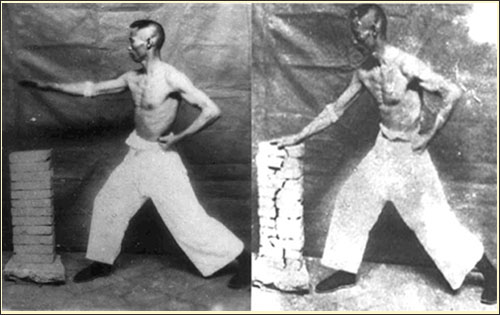
The Five Original Quan of the Shaolin Temple:
1. Longquan/Dragon Fist
2. Hu(zhao)quan/Tiger(claw) Fist
3. Baoquan/Leopard Fist
4. Shequan/Snake Fist
5. (Bai)Hequan/(White)Crane Fist
The Five Major Northern Systems:
1. Shaolin, 2. Huaquan, 3. Zhaquan, 4. Faquan, 5. Paoquan.
A Few of the Associated Northern Systems:
1. Tanglang, 2. Changquan, 3. Yingzhaoquan.
Northern Praying Mantis Styles -
Seven Star Praying Mantis:
Throughout China’s turbulent history there have been many styles of Martial Arts that owe their development to the Shaolin Temple in Henan province. The Temple has actedas a catalyst for the development of the Chinese Martial Arts for generations.
According to tradition the founder of the Seven Star Praying Mantis style was Master Wong Long, an unshaven monk of the Henan Shaolin Temple. Wong Long was a native of Shandong province, he came from a wealthy family and studied the martial arts in his youth. Wong Long entered the Shaolin Monastery around 350-400 years ago in the period between the Ming ( 1368- 1644 ) and the Ching ( 1644-1911) Dynasties, it was a time of chaos for China with the Manchus committing many atrocities. The Manchus were Mongoloid people of Manchuria who conquered China in the 17th century establishing an imperial dynasty that lasted until 1912. At Shaolin, Wong Long would train with his Kung Fu brothers, but no matter how hard he trained, he could never reach their standard and was always defeated by them. Wong would often travel to other areas of China seeking out famous Kung Fu masters to help improve his skills. When he returned to Shaolin he would again train with his Kung fu brothers, although he had obtained the techniques of seventeen different Kung Fu styles he could still not defeat the other monks. While he was away his martial skills had grown to a higher level, but his Kung Fu brothers were also training hard and so their skills had kept pace with his.
One day while out walking, Wong Long witnessed a fight between a Praying Mantis and a Cicada (a large broad winged insect of the homopterous family). Although at first glance it would appear that the small Mantis had a distinct disadvantage against such a large insect, it fought with great courage. Wong was fascinated by the aggressiveness, speed and strength of the apparently overmatched Mantis. When the Cicada attacked, the Mantis would angle its body to the side, and with lightning speed and strength it would pin the Cicada with its powerful forearms. Wong Long took the Mantis back to his living quarters for further study, he used a reed to prod the Mantis and carefully studied its movements, examining how it reacted to various situations,. Wong would then imitate these actions and over time the system slowly evolved. Wong Long compiled these movements into what is known today as the 12 Key Words Verbal Formula, the Seven Long, 8 Short, 8 Rigid hand Patterns, the 12 Flexible Hand Patterns, the Eight Vulnerable and 8 Lethal points of attack. This led to the development of the Praying Mantis style of Kung Fu with its characteristic strong and rapid movements.
When Wong Long was satisfied he added to the new style the best techniques from the other seventeen styles which he had previously studied. The more he practised, the more he realised that although the structure of the style was very fast, depicting the power and speed of the Mantis, the footwork was inadequate to deliver these speedy blows. Wong later observed monkeys playing and fighting, the solution was very clear. If he could blend the clever footwork of the monkey with the hand movements of the Mantis, both speed of hands and feet would be assured. After a further period of training Wong Long tried his newly created style while practising with his fellow Monks. Much to their surprise he was able to defeat them, so much so they continued to train and research together to further improve the skills of this new style. On leaving the Shaolin Monastery Wong returned to Shandong and helped to establish a Temple at Laoshan.
The Seven Star Praying Mantis style takes its name from the star constellation the Big Dipper, the inside meaning being ‘ the disciples of this style should spread all over the world ’. Some historians link this with the Secret Societies whose aim was to ‘ overthrow the Ching and restore the Ming ’. Others say that the Mantis which Wong Long caught had Seven Stars on its body. Of course, with the passing of time it's very difficult to verify these stories, the oral tradition of our school however leans in favour of the first explanation
Tai Chi Praying Mantis
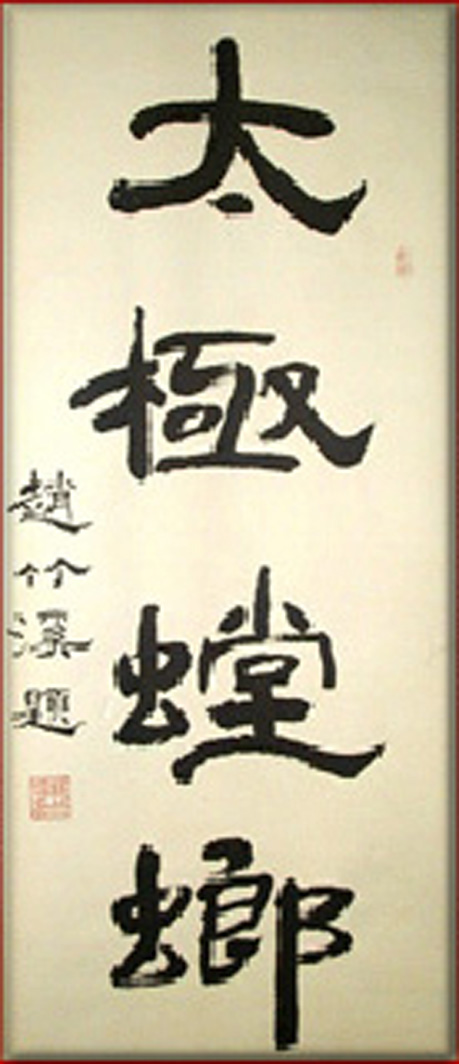
About 350 years ago, in Shantung province, Northeast of China, Master Wong Long, through his observations of nature, combined the predatory skills of the Praying Mantis and the agile footwork of the monkeys, found the Praying Mantis Kung Fu style during his quest for excellence in his combat skill. Since Shantung is a northern province, Praying Mantis Kung Fu is often categorized as a northern style. It is believed that Master Wong was proficient in 17 various styles, which were all northern styles, prior to the creation of his own style. There are as many versions of the birth of various Mantis styles as there are the number of the Mantis branches. Major branches of Praying Mantis include Northern, Seven Stars, Plum Flower, Six Harmonies, and Taiji are practiced worldwide. There are also many other hybrids of Praying Mantis styles. Taiji Praying Mantis’s own documentation shows that Master Sun Yuen Cheung (5th Generation) officially named his branch Taiji Praying Mantis which at that time had no affiliation with Taijiquan at all. It was until Master Chiu Chuk Kai (7th Generation), who was deeply impressed by the ability of the Taijiquan practitioners that he sought after Chen style Taijiquan (small circles) as well as a Taoist monastry Taiji system. He incorporated them into the Taiji Praying Mantis curriculum. Thanks to his effort, all practitioner of this style now enjoys both the external and internal aspects of Kung Fu.
